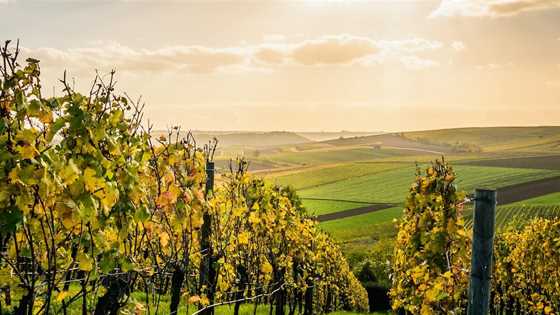Holding the title of Australia’s largest wine region, WA’s Great Southern is home to five distinct subregions: Albany, Denmark, Frankland River, Mount Barker and Porongurup. Riesling and cool climate Shiraz are standout varieties across the entire region, although the classic varieties of Chardonnay, Pinot Noir and Cabernet also flourish.
The first wines, a Riesling and a Cabernet Sauvignon, were made in 1972 from vines first planted in 1965. This year’s vintage was challenging, with high temperatures causing an early growing season, but wine lovers can anticipate an excellent selection of whites and reds to come. Caroline Taylor from the WA Wine Association speaks more on what to expect.
The 2024 Great Southern vintage was one of the earliest on record, with most wine grape varieties harvested by the end of March.
Warmer-than-usual temperatures in late September and October resulted in the vintage starting four weeks earlier than usual. Higher temperatures accelerated budburst, early-season growth and flowering, condensing the growing season. Warm and dry daytime conditions during February and March ensured rapid sugar and flavour accumulation in the lead-up to the early harvest.
The region faced some early-season viticultural challenges, including isolated frost occurrences in the Frankland and Mount Barker subregions in late October that resulted in some crop loss. Some late-season challenges, including heat spikes above 40 degrees in late January and early February, caused sun damage in some blocks of Riesling and Chardonnay, making shrewd irrigation strategy and canopy management key to maximising quality.
Yield outcomes were patchy, with reports of Riesling and Chardonnay yields below expectations by 20-30%. However, other varieties, such as Shiraz, performed at or slightly above yield expectations.

Despite the seasonal viticultural challenges and a smaller-than-average vintage, the early feedback from winemakers is that quality is excellent, with very clean fruit. The primary red varieties, most notably Shiraz and Cabernet, are set to perform exceptionally well due to the high potential afforded by the warmer season for sugar and phenolic ripening as well as flavour intensity. The small berries noted in the Cabernet Sauvignon this year will result in high concentration due to increased skin-to-pulp ratio and colour extraction. These positive outcomes bode well for the future of our wines.
Although Riesling had some yield impacts, the natural acidity at harvest was balanced, and the wine quality is likely to surprise on the upside. Reports on Chardonnay are also robust, with favourable conditions noted in the Porongorup, Denmark, and Mount Barker subregions.
As always, the size and diversity of the Great Southern and its five subregions will lead to a wide variety of vintage quality and quantity outcomes. This diversity, coupled with the unique vineyard site specifics, varietal mix, and viticultural practices employed, makes our region unique and full of potential.







